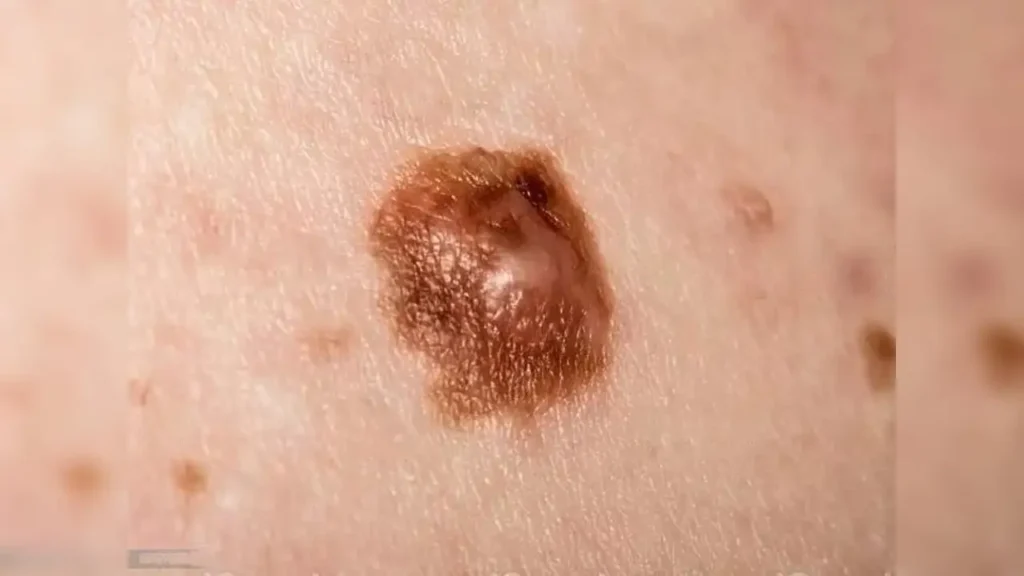Your skin is your body’s largest organ, and paying attention to even small changes can make a life-saving difference. Early detection is one of the most powerful tools in the fight against skin cancer, yet many people overlook the warning signs until the disease has progressed. Let’s explore how to recognize the signs and symptoms of skin cancer.
The ABCDEs of Detection
The ABCDE rule helps you remember what to look for when checking for skin cancer. This simple guide helps you identify potential problems with moles or skin growths:
- A stands for Asymmetry. Normal moles look the same on both sides. If you draw a line down the middle of a mole, both halves should match. When one half looks different from the other, this signals a potential problem.
- B stands for Border irregularity. Healthy moles have smooth, even edges. Moles with jagged, blurred, or uneven borders need attention. The edges may appear scalloped or notched, rather than round and smooth.
- C stands for Color variation. Normal moles stay the same color throughout. Watch for moles that have multiple colors or shades. Brown, black, red, white, or blue areas within the same mole are warning signs.
- D stands for Diameter larger than 6mm. Moles bigger than a pencil eraser deserve closer attention. While some moles grow larger than 6mm, any mole this size should be checked by a doctor.
- E stands for Evolving or changing moles. Any mole that changes over time needs evaluation. This includes changes in size, shape, color, or texture. New symptoms like itching, bleeding, or crusting also count as evolving.
By regularly checking your skin and keeping the ABCDEs in mind, you can identify potential warning signs early and seek professional evaluation promptly.
Other Symptoms
Skin malignancy shows up in different ways beyond the ABCDE rule. Some skin tumors don’t look like typical moles at all. Knowing these other warning signs helps you catch problems early.
Persistent sores that don’t heal within a few weeks need medical attention. These might bleed, crust over, or ooze fluid. Normal cuts and scrapes heal quickly, but epidermal cancer often creates sores that keep coming back.
New skin growths that appear suddenly deserve a closer look. These might be raised bumps, flat patches, or areas that feel different from the surrounding skin. Pay attention to any spot that looks different from your other moles or freckles.
Changes in skin texture also signal potential problems. Areas that become rough, scaly, or feel different when you touch them might indicate skin cancer. The skin might also become tender or painful in these areas.
When To See a Dermatologist
Professional evaluation becomes necessary when you notice any of the warning signs mentioned above. A dermatologist has special training to identify skin cancer and other skin conditions. They use tools and techniques that help them spot problems you might miss.
Schedule an appointment if you have any mole that meets the ABCDE criteria. People with a family history of skin cancer should be extra careful and get regular skin checks. Also, seek help for any skin area that bleeds, itches, or hurts without an apparent cause. Changes in existing moles or the appearance of new moles also warrant professional evaluation.
Regular skin cancer screenings help catch problems before they become serious. Individuals with risk factors like fair skin, a family history of skin cancer, or frequent sun exposure should undergo regular skin checks. Your dermatologist will recommend how often you need these screenings based on your risk.
Book Your Skin Cancer Screening Today.
Recognizing cancer symptoms on the skin early makes treatment more effective. Use the ABCDE rule to check your moles regularly. Watch for new growths, persistent sores, and changes in your skin’s texture or appearance. Don’t ignore warning signs or hope they’ll go away on their own. Contact a trusted dermatologist in your area today to schedule your screening for professional evaluation.

